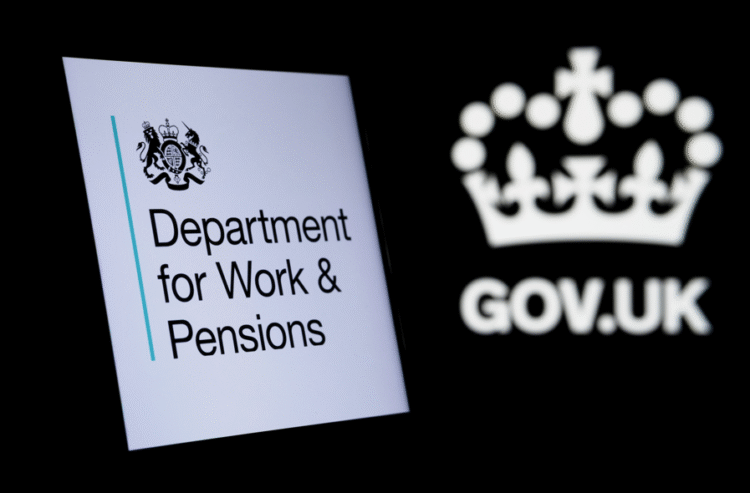The government’s Pension Schemes Bill has been introduced to parliament today to “ensure savers get good returns for each pound they save, and drive investment into the economy”.
The Pensions Regulator (TPR) called the plans to transform the £2 trillion pensions landscape “a once in a generation bill”.
But other industry commentators have questioned why plans to enhance auto-enrolment, to encourage people to address concerns about under saving for retirement, are missing from the reforms.
‘Blockbuster changes’
Auto-enrolment enhancements aside, there are a number of “blockbuster” changes that are included. For example, the bill introduces a new system to show how well defined contribution pension schemes are performing. This new requirement for providers is intended to help savers understand whether their scheme is giving them good value and to prevent them leaving their money in underperforming schemes.
Small pensions, worth £1,000 or less, will be merged into one pension scheme to give savers a better view of the funds they have for retirement. This reform was introduced because many people move jobs and collect a number of “micropots”, which can be tricky to track.
The government has also set out a framework to create multi-employer DC scheme “megafunds” of at least £25 billion. The benefits of creating ‘megafunds’ have been well publicised since the government unveiled its initial plans in November 2024. The theory is that large schemes may boost return on investment for savers because they have the financial clout to invest directly in grand scale projects such as infrastructure at lower cost.
Retirement choices are also set to be simplified, with the bill requiring all pension schemes to offer default routes to an income in retirement.
Flexibility for defined benefit (DB) pension schemes will be increased to safely release surplus worth collectively £160 billion. The thinking behind this reform is that it will support employers’ investment plans and benefit scheme members.
Plans also include the consolidation and professionalisation of the Local Government Pension Scheme (LGPS) so these funds can invest in local area infrastructure, housing and clean energy.
‘Ramping up reforms’
Minister for pensions Torsten Bell said: “We are ramping up the pace of pensions reform. Workers deserve to get better bang for each buck saved, and these sweeping reforms will make sure they do.
“Pension saving is a long game, but getting this right is urgent so that millions can look forward to a higher income in retirement.”
Andy Briggs, CEO of the Phoenix Group, said the bill “sets a clear direction for the future of pensions” as it puts emphasis on building scale and ensuring savers receive value for money.
“People across the country will feel the impact of these changes with plans to consolidate small pots, ensure the dashboard delivers and provide default retirement income options at the point of retirement,” he said.
“Individually these initiatives would be significant but in combination they have the potential to make a significant difference to people’s retirement across the UK and we look forward to working through the detail with government and other stakeholders.”
Brave new world of workplace pensions
Steven Cameron, pensions director at Aegon, said there’s a huge amount to be welcomed in this “blockbuster” of a bill.
“After months, and in some cases years of debate and consultation, the bill paves the way for a brave new world of workplace pensions.”
He said the government is rightly highlighting the benefits that scheme consolidation and a new approach to pension investments can bring to the UK economy.
“But the real litmus test must be to make sure the changes deliver tangible benefits for the millions of individuals saving for retirement,” he added.
Cameron emphasised that savers will have the assurance that workplace pensions are consistently offering value for money, with a strong focus on good investment returns.
“They’ll be able to access pension dashboards to see all their pensions in one place, while having small pots (under £1,000) they’ve left behind when changing jobs brought together.
“The ambition for all schemes to offer their members clear default retirement options will be helpful for some, but mustn’t discourage individuals from engaging fully to make the best decisions for their own personal retirement.”
He added: “There’s a huge amount of change here, with many inter-connections, which will require several years of careful planning and implementation. The government has promised to set out its intended timeline, which will be key in helping both providers and scheme members plan ahead.”
Improved employer decisions
Pete Glancy, head of pensions policy at Scottish Widows, also emphasised the importance of tackling the issue of multiple small pensions, saying that the average person is forecast to have 11 pension pots at retirement.
“We know a third (33 percent) are planning on consolidating their pension in the run up to retirement, and 23 percent want to but don’t know how to go about it. The change should tick a job off the list.”
Glancy added: “We expect this initiative to complement Pension Dashboards. It’s likely that as people become aware of their multiple pension pots through a pension dashboard that they will increasingly choose to consolidate pots, large and small, into whichever product or scheme is offering the best performance.”
Commenting on value for money plans, he said: “At present, there is no way to compare the different products in the market on a like-for-like basis. It’s hard for employers to determine whether workers could benefit from higher investment returns or better decision making support by moving their workplace scheme to another pension provider. This new framework will arm employers and those who advise them to do just this.
“The framework, however, is complex and has been designed for use by pension professionals, including an employer’s pensions manager. It has not been designed with pension savers in mind and can’t currently be used to help them make decisions. It should be a priority to develop a similar framework for pension savers so that any consolidation decisions that they make are properly informed.”
Call for auto-enrolment enhancements
Yvonne Braun, director of policy, long term savings, at the Association of British Insurers (ABI), said: “This wide-ranging bill is set to usher in the most large-scale pension reforms since auto-enrolment. The details will be crucial and we will scrutinise the bill to ensure it puts the interests of savers first.
“We also urgently need to tackle the level of pension contributions which are too low to create an adequate retirement income for many. We urge government to set out the details of its adequacy review as soon as possible.”
Lisa Picardo, chief business officer UK at PensionBee, welcomed plans to consolidate multiple pensions, highlighting the ongoing issue of “millions of lost pots”. She said: “This reform has been a long time coming and should mark the start of a wider shift towards a more modern, joined-up pensions system.”
“In the meantime, savers can take proactive steps to keep their pensions on track by reviewing and consolidating their pots where possible and beneficial – reducing the likelihood of lost pensions, improving investment outcomes by reducing fees and investing in line with their goals and values, and taking control of their retirement savings.”
However, Picardo added: “There has been a notable and disappointing silence on the subject of improving retirement saving levels. Urgent action is still needed to broaden and enhance auto-enrolment and to provide better financial education to encourage people across the UK to save more into their pensions. Many millions of people risk sleepwalking into later life without sufficient pension savings, meaning a retirement lifestyle that does match their expectations or desires.”













